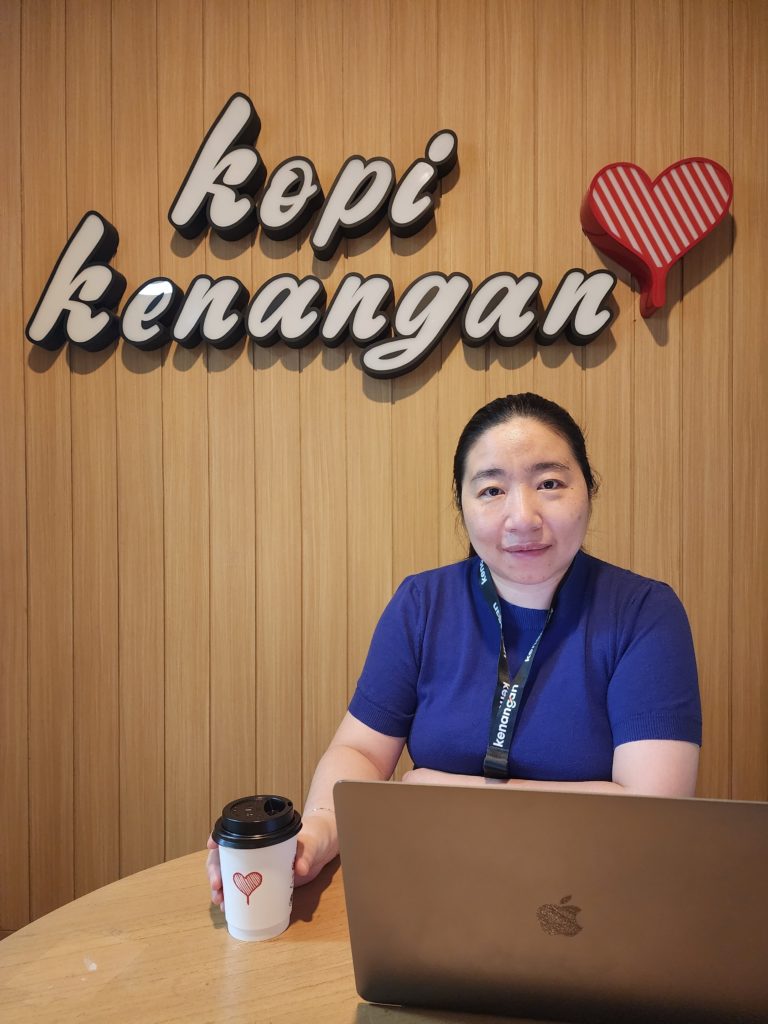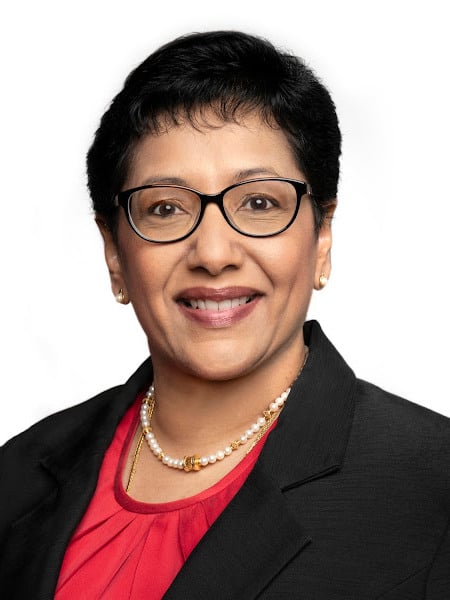One of the most compelling cloud stories of the digital era is that of drug-maker Moderna. The company’s CEO made the strategic decision to build its mRNA research-and-development platform on the public cloud.
When the COVID-19 pandemic hit, the strategy proved prescient, enabling the company to design research experiments quickly and to harness its automated laboratory and manufacturing processes, and enhanced drug-discovery pipeline.
Companies across Southeast Asia are urged to have a very clear and holistic approach to cloud adoption to ensure that the technology delivers desired business value and outcomes for their organisations.
At a hybrid event recently hosted by Google Cloud and SAP, together with FutureCIO, C-suite executives across the sub-region shared how they are accelerating digitisation by implementing SAP on the Google Cloud Platform at their organisation.
Traits of a future-ready enterprise
According to McKinsey, cloud adoption is not just an engine for revenue growth and efficiency. Its speed, scale, innovation, and productivity benefits are essential for pursuing broader digital business opportunities, now and well into the future.
At the hybrid event “Creating a future-ready enterprise with Google Cloud & SAP”, two organisations in Southeast Asia elaborated on their path to the cloud, what drove the decision toward a specific path to migration, and the lessons learned in the journey.
Kopi Kenangan from Indonesia and Ocean Network Express from Singapore – shared their transformation experience around becoming future-ready enterprises, and how this has helped them thrive in the tumultuous business environment of the past two years.
Over a cup of Kopi

For Kopi Kenangan, the path to the cloud came by way of RISE with SAP, an approach that brings together a suite of SAP business applications delivered through a software-as-a-service model. The solution is designed to simplify the migration of mission-critical workloads to the cloud at scale and speed.

“The cloud model brings a lot of advantages. It is an agile way to scale the business and an easy way to optimise operational costs. It also provides better service availability. RISE with SAP enables us to enjoy all the benefits of Google Cloud without the extra effort. Together, they serve as one offer, which makes it an easy decision for us,” said Zeng Fengping, chief technology officer at Kopi Kenangan.
She added: “It simplifies all efforts regarding running and maintaining SAP, and it also gives us the same level of service quality and data privacy protection that we can get in a traditional implementation.”
Established in 2017, Kopi Kenangan is one of the fastest-growing grab-and-go coffee chains in Indonesia with 800 stores across 45 cities, serving 30 million cups as of last year. Plans for expansion to neighbouring countries like Malaysia are in the works.
Zeng helped build a new system that digitised the coffee chain’s end-to-end process. The new system introduced an online order feature that improved customer experience by significantly cutting long queues at its shops. The company’s infrastructure is built in the cloud and its cloud journey is still a work in progress.
“It is important to innovate in new ways. The combination of SAP and Google Cloud is a no-brainer. Also, the post-sales support is a very critical consideration in selecting a partner besides the function maturity and other factors,” said Zheng.
Cloud as a gamechanger
For Ocean Network Express (ONE), the decision to deploy cloud-based applications as much as possible was made way back in 2017. This has enabled the company to navigate the rapidly changing business environment of the last two years.

ONE is the six largest shipping line worldwide, operating a fleet of 205 vessels in a service network covering over 120 countries.

“We are very glad to have made this wise decision at that time. In fact, this enables us to continue our operations without compromising on service quality to our customers,” said Alan Sze, deputy general manager of Business Processes and IT at ONE.
Sze manages the company’s accounting systems and other internal corporate applications like SAP SuccessFactors in human resources (HR) and SAP Concur for travel and expense processes.
The shipping company upgraded to the latest version SAP S/4HANA last year.
“The flexibility and scalability of Google Cloud made our upgrade easy – not to mention the reduction of operational costs and also the reduction of CO2 emissions, which is in line with our corporate sustainability policy,” said Sze.
ONE prides itself on providing enhanced services through innovation. With this in mind, the company is currently working to further elevate their customer experience by tapping into advanced data analytics.
“We are in the midst of building our BigQuery cloud data warehouse and using Looker as our new business intelligence (BI) tool. We are also planning to build our data lake in BigQuery so that we can have the big data analytics capability to achieve operational excellence and to provide a better customer experience,” said Sze.
In short, ONE is integrating SAP data with Google Cloud’s unified data cloud capabilities to drive business impact in logistics planning to ensure operating precision and to scale that enterprise-wide with intelligent maritime innovation.
Southeast Asia on the rise

Ruma Balasubramanian, managing director, of Southeast Asia at Google Cloud, has observed an incredible shift in the digitisation of large enterprises in Southeast Asia.
“They have been thrust into this digital economy by digital-native upstarts, or by just the necessity of getting to their consumers more quickly. This is an incredible inflexion point. It used to be that the cloud was viewed as an opportunity for cost optimisation and resilience, and for operating sustainable infrastructure. But at the end of the day, we're really seeing that the cloud is being used more and more for its transformative effect across the entire enterprise.”
Balasubramanian said that there are now hundreds of SAP customers in the subregion who are running their mission-critical workloads on Google Cloud.
“One that is close to my heart because I have worked very closely with them is VinFast.
“VinFast is one of the leading providers of EVs across the globe. They're making real inroads into that market not just in Asia, but also across Europe and the US. And we had one of the fastest SAP on Google Cloud migrations happening across the company’s European and US operations,” said Balasubramanian.

According to Verena Siow, president and managing director of SAP Southeast Asia, there has been a significant uptake of RISE with SAP in Southeast Asia since its launch 18 months ago.
“The growth that we have seen - the explosion in the interest in moving to the cloud for many companies – has never been this way before. We are at the true pivot in Southeast Asia. This is beyond cost savings. This is truly about business transformation as a service, and that’s really important. It is about driving business transformation. It is about the transformative effect. It’s about value creation,” said Siow.
Both executives enumerated the main selling points for adopting RISE with SAP on Google Cloud:
- Real cash wire transfer: To help CFOs to get started with the project immediately, the upfront cash transfer to the corporate bank account offsets cloud migration cost.
- Single contract: This means one integrated support for SAP applications, Google Cloud infrastructure, and technical managed services.
- Data cloud as the foundation for decision making: Companies can harness the power of Google Cloud to drive data outcomes. Using artificial intelligence (AI) and machine learning (ML) in big data analytics, companies can accelerate their innovation journey.
A ticking clock

SAP has set a roadmap that will have all its customers migrating to the S/4 HANA Cloud ERP system by 2027 when it ends the mainstream maintenance support of its older ECC ERP system.
S/4 HANA Cloud is one of the core applications within the RISE with SAP offering.
For companies mulling over the transition via the cloud, the decision has to be made now.
“The S/4HANA deadline is now 2027. Plenty of time, right?” asks Guruprasad Gaonkar, sales lead, Southeast Asia, Google Cloud. “Working backwards, we're talking about 12 to 18 months to stabilize the entire operating model (i.e., this is not just systems, this is also about people, process, and technology). Add another 12 to 24 months to fully transform your entire landscape from older versions into S/4HANA,” said Gaonkar.
He added: “RISE with SAP on Google Cloud not only delivers immediate benefits but also sets the foundation to drive enterprise-wide transformation as a service – and when you combine various other innovations on Google Cloud, especially with data, AI, ML and many more, the benefits are overwhelming.”
So, if you add the above timeline one year plus three years, customers have anywhere between now to the next 14 months to make that decision on RISE with SAP and Google Cloud. So, the time is now.”





